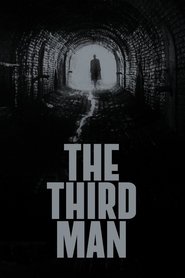Manny Farber and I do not share the same opinion of The Third Man, although his unforgettably harsh critique of this film, “over-elaborated to the point of being a monsterpiece,” is fascinating and crucial to me for the way it reveals the historical persistence of a certain brand of cinephile—of which I am one, likely—resistant to trend-setting virtuosity. How Farber felt in 1949 about The Third Man’s “pretentious camera, motorless design, self-conscious involvement with balloon hawker, porter, belly dancer tramp” could be similar to how I felt about, say, Fight Club upon release, a film whose intestinal, insistent design is frequently regarded as “classic.”
— Michael Koresky (Reverse Shot)
Synopsis: In postwar Vienna, Austria, Holly Martins, a writer of pulp Westerns, arrives penniless as a guest of his childhood chum Harry Lime, only to learn he has died. Martins develops a conspiracy theory after learning of a "third man" present at the time of Harry's death, running into interference from British officer Major Calloway, and falling head-over-heels for Harry's grief-stricken lover, Anna.

